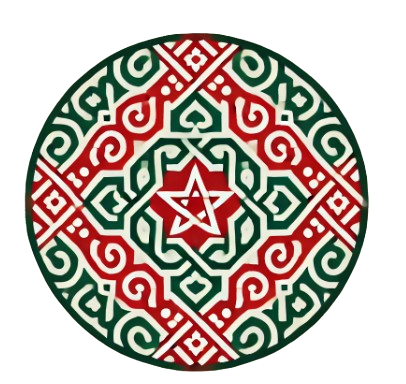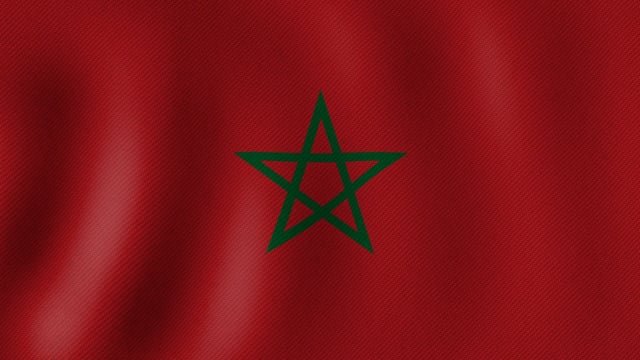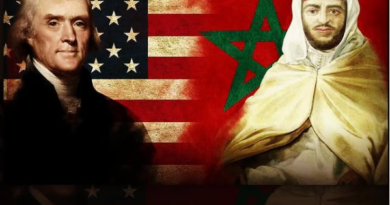The History of the Moroccan Flag
The Moroccan flag, with its distinctive red field and green star, is a powerful symbol of the country’s rich history, culture, and identity. Its journey through time reflects the evolution of Morocco’s monarchy, religion, and national sovereignty. Here’s a look at the history of this iconic flag:
Origins of the Moroccan Flag
The origins of the Moroccan flag can be traced back to the Idrisid Dynasty in the 8th century, when Morocco established itself as an independent Islamic state. While specific flag designs from this era are not well-documented, historical records suggest the use of solid colors, particularly red and white, which were symbolic of Islamic and Arab identity.
Red: A Symbol of Power and Resistance
By the Almohad Dynasty (12th–13th centuries), Morocco adopted a plain red flag, a color associated with power, courage, and sovereignty. Red became synonymous with Morocco’s ruling class, particularly in the Alaouite Dynasty, which traces its lineage to the Prophet Muhammad. The Alaouite rulers solidified the use of red as a key element in Moroccan banners, reinforcing their spiritual and political legitimacy.
The Green Star: A Modern Addition
The defining feature of Morocco’s flag today—the green pentagram—was introduced in 1915 under Sultan Moulay Yusef during the French protectorate. The star is known as the “Seal of Solomon” and represents the connection between God and humanity. Each of the five points signifies the five pillars of Islam: faith, prayer, charity, fasting, and pilgrimage.
This change was significant, as it gave the flag a unique and unmistakable identity distinct from other nations. The green star also emphasized Morocco’s Islamic faith and cultural heritage.
The Flag Under French and Spanish Rule
From 1912 to 1956, Morocco was divided into French and Spanish protectorates. During this time, the Moroccan flag continued to represent the Sultanate’s monarchy, but its use was restricted in certain regions under colonial control. The flag’s symbolic importance grew as it became a rallying point for Moroccan resistance and a marker of national pride.

Post-Independence and Modern Use
When Morocco gained independence in 1956, the flag with the red field and green pentagram was officially adopted as the national flag. It remains unchanged to this day, embodying the country’s sovereignty and unity.
The red background continues to represent courage, strength, and sacrifice, while the green pentagram reflects peace, hope, and Morocco’s deep ties to Islam. Together, these elements symbolize the nation’s historical continuity and its aspirations for the future.
Moroccan Flag in Cultural and National Identity
The Moroccan flag holds a central place in the hearts of its people. It is prominently displayed during national celebrations, such as Independence Day and Throne Day, and in international sporting events where Moroccan teams compete. The flag is a powerful emblem of Morocco’s unity, resilience, and pride on the global stage.
The Decrees of 1915 under Sultan Moulay Youssef
Sultan Moulay Youssef (1876–1927), a ruler of the Alaouite dynasty, governed Morocco during a critical period of its history. His reign (1912–1927) coincided with the French and Spanish protectorates, a time marked by profound political, economic, and cultural transformations. Among the significant events during his rule were the decrees issued in 1915, which had lasting impacts on Morocco’s identity, governance, and symbolism.
Background: The French Protectorate
In 1912, the Treaty of Fes formalized Morocco as a protectorate under French control, with Spain administrating smaller zones in the north and south. Sultan Moulay Youssef, installed as a figurehead ruler under French auspices, had limited political authority but remained a symbol of continuity for the Moroccan people.
Amid colonial administration efforts to modernize infrastructure and centralize governance, the Sultan played a delicate role, balancing his position as a spiritual leader with the realities of French oversight.

The Decree of 1915: The Moroccan Flag
One of the most notable decrees of 1915 was the formal modification of the Moroccan flag, a significant cultural and national decision. Before this decree, the Moroccan flag was a plain red field, representing the Alaouite dynasty and its historic association with power and sovereignty.
In 1915, the French administration, with the Sultan’s approval, introduced the green pentagram to the flag. The pentagram, also known as the Seal of Solomon, was a powerful symbol with Islamic and cultural significance. Each of the five points represented the pillars of Islam:
- Shahada: Faith
- Salat: Prayer
- Zakat: Charity
- Sawm: Fasting during Ramadan
- Hajj: Pilgrimage to Mecca
The addition of the pentagram aimed to solidify Morocco’s unique identity within the Islamic world while aligning it with colonial interests, as France sought to preserve symbolic aspects of Moroccan culture to legitimize its rule.

Significance of the Decrees
The 1915 decrees under Sultan Moulay Youssef were part of a broader French effort to consolidate administrative and cultural control over Morocco. These decrees:
- Reinforced Symbolism: The updated flag became a powerful emblem of national identity, blending historical Islamic motifs with modern political realities.
- Maintained Sovereignty in Appearance: While the Sultan’s authority was limited under the protectorate, decrees such as the flag modification allowed him to maintain his role as a spiritual and cultural figurehead, preserving a sense of Moroccan sovereignty.
- Strengthened Religious Connection: The use of the green pentagram underscored Morocco’s Islamic faith, which was central to the Sultan’s legitimacy.
Challenges During Moulay Youssef’s Reign
Despite symbolic measures like the 1915 decrees, Sultan Moulay Youssef faced challenges from all sides:
- Colonial Influence: The French administration wielded substantial control over policy and governance, often sidelining the Sultan.
- Resistance Movements: Nationalist and tribal resistance to colonial rule grew during his reign, particularly in rural areas where leaders like Abdelkrim El-Khattabi opposed the foreign presence.
- Balancing Tradition and Modernization: While the Sultan supported reforms, he had to navigate the fine line between modernity imposed by the French and the preservation of Moroccan traditions.

Legacy of the 1915 Decrees
The decrees issued during Sultan Moulay Youssef’s reign, particularly the adoption of the green pentagram on the Moroccan flag, have endured as a symbol of Morocco’s identity. The flag continues to evoke the country’s Islamic heritage, royal authority, and resilience in the face of historical challenges.
Moulay Youssef’s leadership during a turbulent period helped lay the groundwork for Morocco’s eventual independence in 1956. While his power was constrained, his ability to serve as a unifying figure ensured that Morocco’s cultural and religious identity remained intact during the colonial era.




